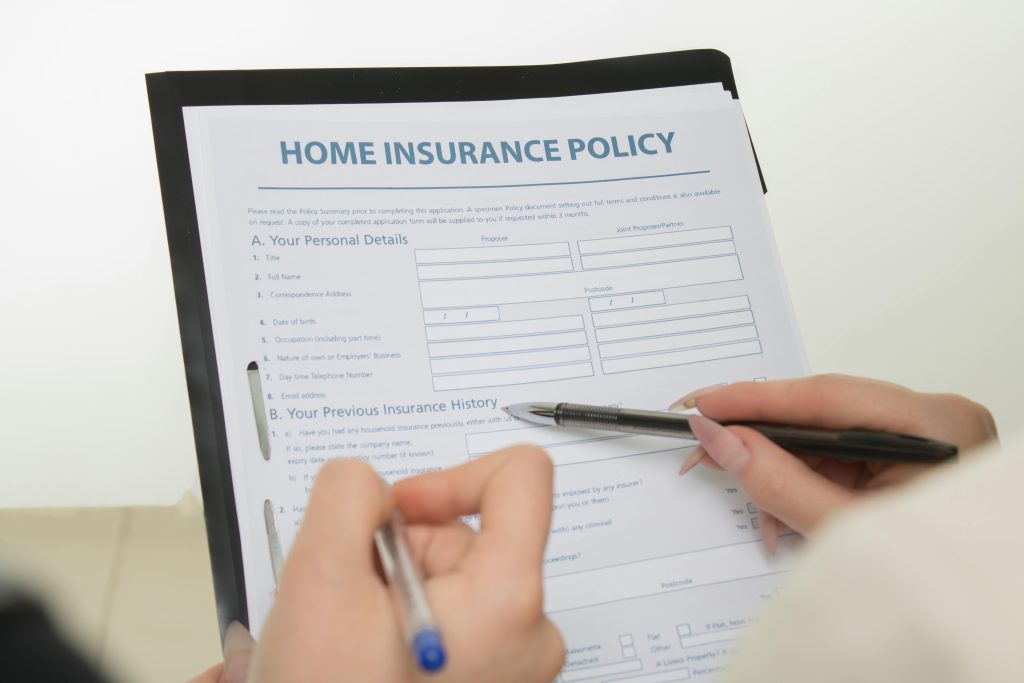When it comes to protecting your home and belongings, finding the right insurance policy is essential. By comparing home insurance quotes side by side, you can secure the best coverage at the most affordable rate, ensuring that your property is fully protected.
For most homeowners, their house is their largest asset, and replacing it independently would be nearly impossible. That’s where homeowners insurance steps in. This coverage helps protect against the financial risks of damage or loss to your home due to natural disasters, fires, or other hazards.
However, home insurance does add to the cost of owning a home, and prices can be significant. In fact, home insurance rates are projected to increase by 6% in 2024, bringing the average annual cost to $2,522 according to Insurify data analysts. With rates expected to continue rising, it’s crucial to compare home insurance policies from multiple insurers to secure the best coverage at the most affordable rate.
Here’s what you need to know about this essential insurance.

How to Compare Home Insurance Quotes
Comparing quotes is the most effective way to find the right home insurance policy that suits your needs. Follow these steps to start comparing quotes efficiently:
1. Determine How Much Coverage You Need
Before comparing quotes, it’s essential to understand the amount of coverage required for your home.
- Start by assessing the value of your home and the cost to rebuild it, including any other structures like a garage or shed. Also, evaluate your personal belongings and how much it would cost to replace them.
- The cost of replacing items has risen by 45% since 2020, driven by the increasing costs of construction materials and labor, according to the Insurance Information Institute (Triple-I).
- Next, consider your coverage options:
Replacement Cost Policies: These cover the cost to replace damaged items with the same materials. While more expensive, they offer higher compensation.
Actual Cash Value Policies: These are more affordable but factor in depreciation, meaning you’ll receive less compensation for older items.
It’s a good idea to work with your insurance agent to calculate the appropriate coverage levels and ensure your policy meets your needs.
2. Compare Home Insurance Quotes
Once you know your coverage needs, use a price-comparison platform to compare quotes from multiple insurers quickly. Enter basic information about your home, and review quotes from at least three to five different companies.
Remember, the cheapest policy might not always be the best fit for you, so weigh both cost and coverage options when making your decision.
3. Look for Discounts
Many insurers offer discounts for various factors, including bundling policies, staying claims-free, making home improvements, or installing safety features.
- Some insurers list discounts on their websites, while others don’t, so it’s important to do your research and ask your insurance agent about any potential discounts you might qualify for.
- Common discounts include savings for loyalty, claims-free history, and installing smoke alarms or security systems.
4. Review Each Home Insurance Quote
Once you’ve gathered several quotes, it’s time to compare them side by side. While price is a key consideration, don’t overlook other important factors such as coverage limits, deductibles, and specific perils covered. Be sure to check for any gaps in coverage where your policy may not pay out as expected.
5. Purchase a Home Insurance Policy
When you find a policy that fits your needs and budget, contact the insurer or an agent to proceed. This is also the perfect opportunity to clarify any remaining questions and inquire about discounts or bundling options.
Your insurer can guide you through the final steps and confirm whether the policy is suitable for your home, location, and specific requirements.
What Home Insurance Covers

Homeowners insurance is divided into six distinct coverages, labeled A through F, each designed to protect different aspects of your home and liability:
- Coverage A – Dwelling Coverage:
Often called replacement cost coverage, this protects against damage to the structure of your home, covering repair or rebuild costs. - Coverage B – Other Structures:
This covers damage or loss to detached structures on your property, such as a detached garage, tool shed, swimming pool, or gazebo. - Coverage C – Personal Property:
Provides protection for personal belongings in your home, such as furniture, appliances, clothing, and electronics. Coverage C may have lower limits for high-value items like jewelry, antiques, or firearms, so you may need additional coverage for these. - Coverage D – Loss of Use:
If your home becomes uninhabitable due to damage or loss, this coverage helps with additional living expenses. It covers temporary lodging, meals, moving expenses, and any extra commuting costs while your home is being rebuilt. - Coverage E – Personal Liability:
This protects you if you or a family member living in your home are found legally responsible for injury to someone else or damage to their property. - Coverage F – Medical Payments to Others:
If a guest is accidentally injured on your property, this coverage helps pay for their medical expenses.
In general, a standard homeowners insurance policy should provide all six types of coverage. However, the level of coverage for each may vary depending on the policy, so it’s important to understand what’s included and the amount your insurer will cover in the event of a claim.
While homeowners insurance isn’t legally required, most mortgage lenders will insist on having a policy in place before approving your mortgage. This is because lenders want to protect their financial interest in your home. Even if you’ve paid off your home in full, carrying homeowners insurance is still a wise choice due to the financial protection it provides.
Homeowners insurance covers you in the event of unexpected damage or loss, including:
- Fire: Even a small fire can cause extensive damage. On average, fire damage restoration costs $4.70 per square foot in the U.S., according to National Catastrophe Restoration Inc. For a 2,500-square-foot home, this totals $11,750. Costs can vary based on location, damage extent, and labor or material availability, and this doesn’t include temporary living expenses if you have to vacate your home during repairs.
- Burglary: According to the FBI, the average value of personal property stolen in a single burglary is $2,661 (as of 2019). Additionally, 55.7% of burglaries involve forced entry, meaning you may also need to pay for structural repairs in addition to replacing stolen items.
- Injury to a Guest: If someone is injured on your property or their property is damaged due to your actions, you may be responsible for paying their medical bills or repairing/replacing damaged items. In some cases, the injured party may sue you.
Homeowners insurance helps cover these situations by paying for home repairs after a fire or covered disaster, temporary living expenses while your home is being repaired, replacement of stolen items, and liability protection in the event of accidental injuries to others on your property.
Homeowners Insurance Discounts

Homeowners can take advantage of several discounts to help reduce their premium costs. Here are some common types of discounts available
Policy Discounts
- Multi-Policy Discounts: Save on all your insurance policies by bundling home and auto coverage with the same insurer.
- Loyalty Discounts: Enjoy savings for staying with the same insurer for several years.
- Pay-in-Full Discount: Receive a price break by paying your premium in one annual lump sum instead of monthly payments. Mortgage lenders typically require an escrow account to pay the annual premium on your behalf.
Identity-Based Discounts
- Married/Widowed Discount: Get a reduced rate if you’re married or widowed.
- Mature Homeowners Discount: Retired homeowners may qualify for lower rates since they’re home more often, reducing the risk of burglaries.
- Homeowners Association (HOA) Discount: HOA members can benefit from discounts due to the high maintenance standards often enforced by the association.
Safety and Security Discounts
- Monitored Burglar System Discount: Save by installing a burglar alarm system.
- Monitored Fire Alarm System Discount: Receive savings for having up-to-date smoke or fire alarm systems.
- Impact-Resistant Roof Discount: Available for homeowners in high-risk areas for windstorms or hail who maintain an impact-resistant roof.
- Home Improvement Discounts: Certain upgrades or risk mitigation measures may make you eligible for savings. Many states mandate discounts for homeowners who take these steps.
- Gated Community Discount: Living in a gated community may lower your premium due to fewer safety threats.
- New-Home Discount: If you buy a newly built home that meets all local building codes, you could qualify for savings.
- Non-Smoker Discount: Homeowners who don’t smoke may qualify for reduced rates since smoking is a leading cause of house fires.
Factors That Affect Your Home Insurance Rates
Several factors influence your home insurance rates. Common variables include:
- Location: The risk factors associated with your area, such as proximity to flood zones, crime rates, or weather patterns, impact premiums.
- Construction Type: Homes made from materials like wood vs. stone or with features like flat vs. sloped roofs can experience varying risks of damage.
- Replacement Cost: Homes constructed with more expensive materials will cost more to replace, raising your insurance premiums.
- Liability Coverage: Higher liability coverage increases your premiums. Additional risk factors, such as having a swimming pool or aggressive dog, may also drive up costs. An umbrella policy can offer additional liability protection.
- Dwelling Coverage: Your dwelling coverage limit should match the cost to rebuild your home at current material and labor prices. Higher limits equal higher premiums.
- Credit History: In some states, insurers can factor in credit history. Poor credit may result in higher premiums due to the perceived higher risk of filing claims.
- Number of Claims: Fewer claims can result in lower premiums, as maintaining a clean claims record for several years can earn you discounts.
- Deductible Amount: Choosing a higher deductible lowers your premium, while a lower deductible increases it. If you live in a high-risk area for windstorms, your policy may include a separate deductible for tropical systems.
Homeowners Insurance FAQs
Here are answers to some common questions home insurance shoppers ask:
What company has the cheapest homeowners insurance?
According to Insurify, Commonwealth Casualty offers the lowest rates for a policy with a $300,000 dwelling coverage limit, averaging $77 per month or $924 annually. Regional insurers like Westfield may also offer affordable rates but are only available in certain states.
Is home insurance required?
While not legally required, mortgage lenders typically mandate homeowners insurance. Even without a mortgage, it’s advisable to carry insurance for financial protection.
How much homeowners insurance coverage do you need?
You should have enough coverage to fully replace your home and possessions if they’re destroyed. This depends on your financial situation and the value of your assets.
Is homeowners insurance tax deductible?
Homeowners insurance isn’t tax-deductible for primary residences. However, if you run a business out of your home or rent out part of the property, you may be able to deduct a portion of the premiums as a business expense.
